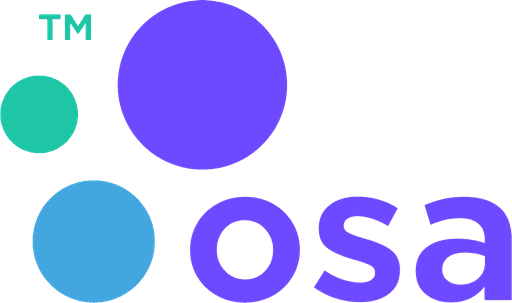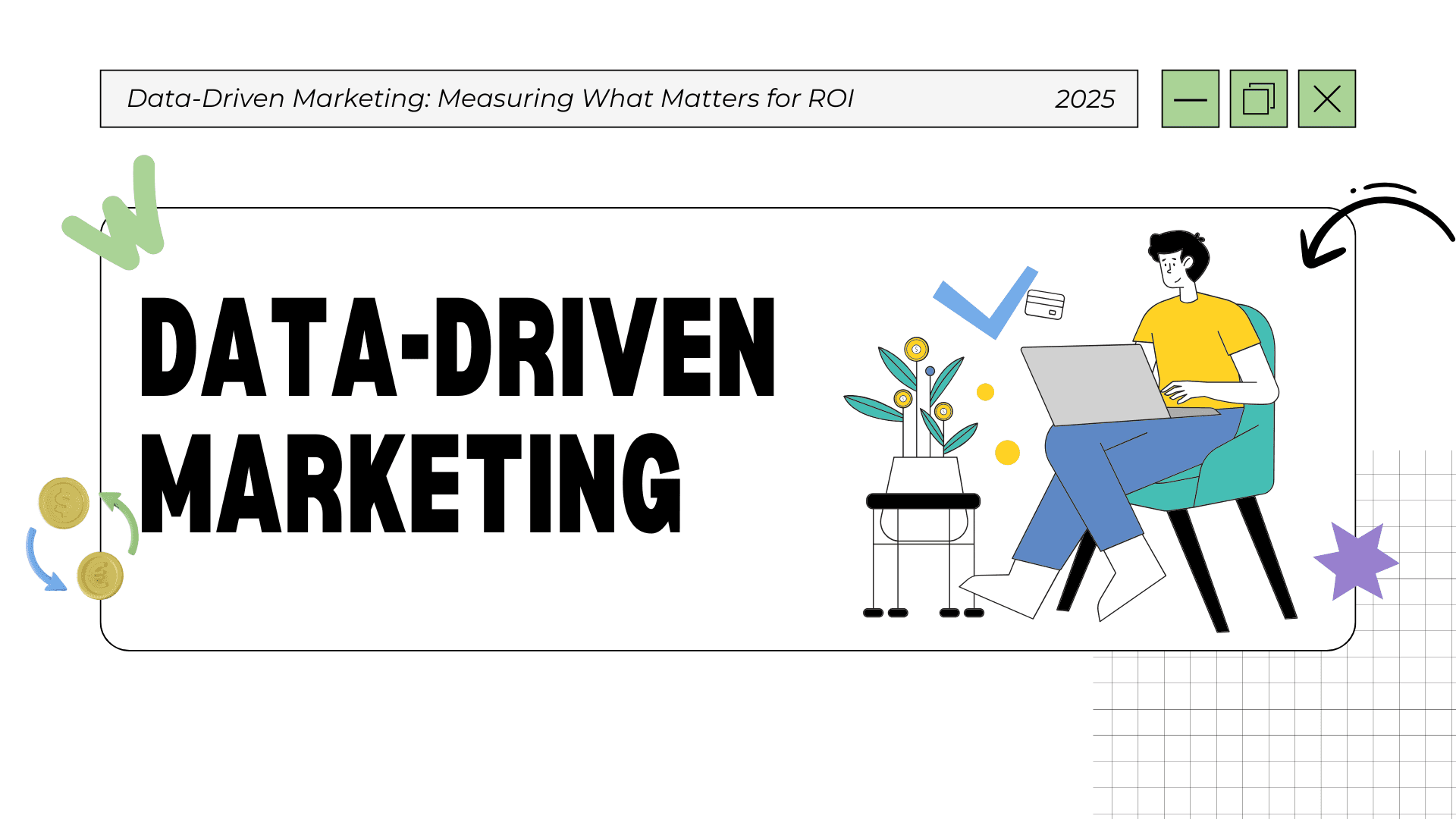Small Business Digital Transformation: Complete Strategy Guide for Growth in 2025
May 31, 2025
Blog Post 4: Small Business Digital Transformation: Complete Strategy Guide for 2025
Small Business Digital Transformation: Complete Strategy Guide for Growth in 2025
Published: January 18, 2025 | 11 min read
Meta Description: Transform your small business with digital solutions. Complete guide covering automation, online presence, customer experience, and technology strategies for sustainable growth.
Introduction
Digital transformation is no longer optional for small businesses. Companies that embrace digital strategies achieve 2.5x higher revenue growth and 3x better customer retention than those that don't. With 87% of customers starting their buying journey online, businesses must adapt or risk being left behind.
What is Digital Transformation for Small Business?
Digital transformation involves integrating technology into all areas of your business to improve operations, enhance customer experiences, and drive growth. It's not just about having a website—it's about fundamentally changing how you operate and deliver value to customers.
Why Small Businesses Need Digital Transformation
Competitive Advantage
73% of consumers prefer businesses that offer digital experiences. Small businesses that digitize early gain significant advantages over slower-moving competitors.
Cost Reduction
Digital automation reduces operational costs by 20-30% while improving accuracy and efficiency across business processes.
Customer Expectations
Modern customers expect 24/7 availability, instant responses, and personalized experiences. Digital transformation enables meeting these expectations.
Market Expansion
Digital presence allows small businesses to reach global markets without physical expansion, increasing potential customer base by 500-1000%.
Core Areas of Digital Transformation
1. Online Presence Development
Professional Website Creation
Your website serves as your digital storefront and often creates the first impression of your business.
Essential Website Features:
Mobile-Responsive Design: 60% of traffic comes from mobile devices
Fast Loading Speed: Pages should load under 3 seconds
Clear Navigation: Intuitive menu structure and search functionality
Contact Information: Multiple ways for customers to reach you
About Page: Build trust with your story and team information
Search Engine Optimization (SEO)
Local SEO Priorities:
Google My Business: Complete profile with photos and reviews
Local Keywords: Target "near me" and location-specific searches
Customer Reviews: Encourage and respond to online reviews
Local Directories: Consistent NAP (Name, Address, Phone) across platforms
Content Marketing Strategy
Regular content creation establishes expertise and improves search rankings.
Content Types That Work:
Blog Posts: Industry insights and how-to guides
Video Content: Product demonstrations and behind-the-scenes
Case Studies: Success stories and customer testimonials
Social Media Posts: Daily engagement and community building
2. Customer Relationship Management (CRM)
CRM System Implementation
Benefits of CRM Systems:
Customer Data Organization: Centralized customer information
Sales Pipeline Management: Track opportunities and follow-ups
Communication History: Complete interaction records
Automated Follow-ups: Consistent customer engagement
Popular CRM Solutions for Small Business
HubSpot: Free tier with robust features
Salesforce Essentials: Comprehensive sales management
Zoho CRM: Affordable with integration options
Pipedrive: Simple, user-friendly interface
Customer Data Utilization
Transform customer data into actionable insights for better decision-making.
Key Metrics to Track:
Customer Acquisition Cost (CAC)
Customer Lifetime Value (CLV)
Churn Rate and Retention
Purchase Frequency and Average Order Value
3. Business Process Automation
Administrative Task Automation
Automatable Processes:
Invoice Generation and Payment Processing
Appointment Scheduling and Reminders
Inventory Management and Reordering
Email Marketing Campaigns
Social Media Posting
Workflow Optimization Tools
Zapier: Connect different apps and automate workflows
Microsoft Power Automate: Enterprise-level automation
IFTTT: Simple trigger-based automation
Monday.com: Project management with automation features
Time and Cost Savings
Automation typically saves small businesses 10-15 hours per week and reduces operational costs by 25%.
Digital Marketing Transformation
Social Media Strategy Development
Platform Selection
Choose platforms where your target audience is most active.
Platform Demographics:
Facebook: Broad demographics, local business focus
Instagram: Visual content, younger demographics
LinkedIn: B2B networking, professional services
TikTok: Gen Z and millennial engagement
YouTube: Educational content and demonstrations
Content Creation and Management
Social Media Best Practices:
Consistent Posting Schedule: 3-5 times per week minimum
Visual Content Focus: Images and videos perform 40x better
Community Engagement: Respond to comments and messages promptly
User-Generated Content: Encourage customer photos and reviews
Email Marketing Implementation
Email List Building
Lead Magnet Ideas:
Free Guides and E-books
Discount Codes and Special Offers
Webinars and Educational Content
Newsletter Subscriptions with Exclusive Content
Email Campaign Types
Welcome Series: Introduce new subscribers to your business
Product Promotions: Feature new products or services
Educational Content: Share valuable industry insights
Customer Stories: Highlight success stories and testimonials
Email Marketing ROI
Email marketing generates an average return of $42 for every $1 spent, making it one of the most effective digital marketing channels.
Online Advertising Strategy
Google Ads for Local Business
Campaign Types:
Search Ads: Target high-intent keywords
Local Service Ads: Appear for location-based searches
Display Ads: Build brand awareness with visual content
Shopping Ads: Showcase products with images and prices
Social Media Advertising
Facebook and Instagram Ads:
Local Awareness Campaigns: Target nearby customers
Lead Generation Ads: Collect contact information
Retargeting Campaigns: Re-engage website visitors
Lookalike Audiences: Find similar customers
Budget Allocation Guidelines
Start with 5-10% of revenue allocated to digital advertising, adjusting based on performance and growth goals.
E-commerce and Online Sales
Online Store Development
E-commerce Platform Selection
Popular Platforms for Small Business:
Shopify: User-friendly with extensive app ecosystem
WooCommerce: WordPress-based, highly customizable
Square Online: Free option with built-in payment processing
BigCommerce: Enterprise features for growing businesses
Product Catalog Optimization
Essential Elements:
High-Quality Product Photos: Multiple angles and lifestyle shots
Detailed Descriptions: Benefits-focused copy with specifications
Customer Reviews: Social proof and purchase confidence
Related Products: Cross-selling and upselling opportunities
Payment and Shipping Solutions
Payment Gateway Options:
Stripe: Developer-friendly with low fees
PayPal: Trusted brand recognition
Square: Integrated POS and online payments
Apple Pay/Google Pay: Mobile-optimized checkout
Digital Payment Integration
Contactless Payment Solutions
Benefits:
Faster Transactions: Reduced checkout time
Improved Hygiene: Contactless interaction preference
Customer Convenience: Multiple payment options
Transaction Security: Enhanced fraud protection
Online Invoicing and Payment
Digital invoicing systems improve cash flow by 25-30% through faster payment processing and automated reminders.
Customer Experience Enhancement
Omnichannel Customer Service
Multi-Channel Support Options
Customer Service Channels:
Live Chat: Real-time website assistance
Email Support: Detailed problem resolution
Phone Support: Personal customer connection
Social Media: Public and private message responses
Response Time Expectations
Industry Standards:
Live Chat: Under 2 minutes
Email: Within 24 hours
Social Media: Within 4 hours
Phone: Answer within 3 rings
Personalization Strategies
Customer Segmentation
Segmentation Categories:
Demographics: Age, location, income level
Behavior: Purchase history, website activity
Preferences: Product categories, communication channels
Lifecycle Stage: New customer, repeat buyer, at-risk
Personalized Marketing
Personalization Tactics:
Targeted Email Campaigns: Segment-specific messaging
Product Recommendations: Based on purchase history
Dynamic Website Content: Personalized landing pages
Customized Offers: Relevant promotions and discounts
Technology Infrastructure
Cloud-Based Solutions
Benefits of Cloud Computing
Advantages:
Cost Reduction: No hardware investment required
Scalability: Easy capacity adjustment
Accessibility: Work from anywhere capability
Security: Enterprise-level protection
Automatic Updates: Latest features and security patches
Essential Cloud Services
Core Cloud Applications:
File Storage: Google Drive, Dropbox, OneDrive
Communication: Slack, Microsoft Teams, Zoom
Project Management: Asana, Trello, Monday.com
Accounting: QuickBooks Online, Xero, FreshBooks
Cybersecurity Measures
Essential Security Practices
Security Fundamentals:
Strong Password Policies: Complex, unique passwords
Two-Factor Authentication: Additional login security
Regular Software Updates: Security patch installation
Data Backup: Automated cloud backup systems
Employee Training: Cybersecurity awareness education
Data Protection Compliance
Regulatory Considerations:
GDPR: European customer data protection
CCPA: California consumer privacy rights
HIPAA: Healthcare information security
PCI DSS: Payment card data protection
Implementation Roadmap
Phase 1: Foundation Building (Months 1-3)
Priority Tasks
Website Development: Professional, mobile-responsive site
Google My Business: Complete profile optimization
Basic Social Media: Establish presence on 2-3 platforms
Email Collection: Implement lead capture system
Expected Outcomes
Online Presence Establishment
Local Search Visibility
Customer Contact Database Start
Basic Digital Marketing Foundation
Phase 2: System Integration (Months 4-6)
Implementation Focus
CRM System Setup: Customer data organization
Email Marketing Platform: Automated campaigns
Process Automation: Key workflow optimization
Analytics Implementation: Performance tracking
Measurable Results
20% improvement in customer communication
15% increase in lead generation
10 hours weekly time savings
Enhanced customer data insights
Phase 3: Advanced Optimization (Months 7-12)
Growth Initiatives
E-commerce Integration: Online sales capability
Advanced Marketing: Paid advertising campaigns
Customer Personalization: Targeted experiences
Performance Analytics: Data-driven optimization
Growth Targets
30% increase in online revenue
25% improvement in customer retention
40% growth in digital marketing ROI
50% increase in operational efficiency
Measuring Digital Transformation Success
Key Performance Indicators (KPIs)
Business Growth Metrics
Revenue Growth: Month-over-month increase
Customer Acquisition: New customer rate
Market Reach: Geographic expansion
Operational Efficiency: Cost per transaction
Digital Engagement Metrics
Website Traffic: Visitors and page views
Social Media Engagement: Likes, shares, comments
Email Open Rates: Campaign effectiveness
Online Conversion Rates: Digital sales performance
Customer Experience Metrics
Customer Satisfaction: Survey scores and feedback
Net Promoter Score (NPS): Customer loyalty measurement
Response Time: Customer service efficiency
Retention Rate: Customer loyalty tracking
Common Challenges and Solutions
Budget Constraints
Cost-Effective Strategies
Start Small: Implement essential tools first
Free Trials: Test platforms before purchasing
Gradual Implementation: Phase-based approach
ROI Focus: Prioritize high-impact initiatives
Funding Options
Small Business Grants: Government and private grants
Low-Interest Loans: SBA and bank financing
Revenue-Based Financing: Performance-linked funding
Technology Partnerships: Vendor financing programs
Skills and Training Gaps
Team Development
Online Training: Coursera, LinkedIn Learning, Udemy
Vendor Training: Platform-specific education
Industry Workshops: Professional development events
Consultant Partnerships: Expert guidance and support
Change Management
Clear Communication: Explain benefits and expectations
Gradual Implementation: Avoid overwhelming changes
Success Celebration: Recognize achievements
Feedback Integration: Listen and adapt to concerns
Future Trends in Small Business Digital Transformation
Artificial Intelligence Integration
AI Applications for Small Business
Chatbots: 24/7 customer service automation
Predictive Analytics: Sales forecasting and inventory management
Personalization Engines: Customized customer experiences
Automated Content Creation: Marketing material generation
Voice Technology Adoption
Voice Search Optimization
Local Voice Searches: "Near me" query optimization
Conversational Keywords: Natural language targeting
Voice Commerce: Audio-based purchasing options
Smart Speaker Marketing: Alexa and Google Assistant presence
Augmented Reality (AR) and Virtual Reality (VR)
Immersive Customer Experiences
Virtual Product Trials: Try-before-you-buy experiences
Virtual Store Tours: Remote shopping experiences
AR Product Visualization: See products in real environments
Virtual Consultations: Remote expert advice
ROI Expectations and Timeline
Year One Results
Typical Improvements:
20-30% increase in online visibility
15-25% growth in lead generation
10-20% improvement in operational efficiency
5-15% increase in customer satisfaction
Long-Term Benefits (Years 2-3)
Sustainable Growth:
50-100% increase in digital revenue
40-60% improvement in customer retention
30-50% reduction in operational costs
25-40% growth in market reach
Investment Recovery
Most small businesses see complete ROI within 12-18 months of implementing comprehensive digital transformation strategies.
Getting Started: Action Steps
Immediate Actions (This Week)
Audit Current Digital Presence: Website, social media, online reviews
Define Digital Goals: Specific, measurable objectives
Identify Priority Areas: Focus on highest-impact improvements
Research Solution Providers: Compare platforms and services
Short-Term Planning (Next Month)
Create Implementation Timeline: Phased approach with milestones
Allocate Budget: Determine investment levels for each initiative
Team Preparation: Training and skill development planning
Vendor Selection: Choose platforms and service providers
Long-Term Strategy (Next Quarter)
Begin Implementation: Start with foundation-building phase
Monitor Progress: Track KPIs and adjust strategies
Scale Successful Initiatives: Expand what works
Plan Advanced Features: Prepare for growth phases
Conclusion
Digital transformation is essential for small business survival and growth in 2025. Companies that embrace digital strategies create competitive advantages, improve customer experiences, and achieve sustainable growth. Start with foundational elements like professional websites and basic automation, then gradually expand into advanced features like AI and personalization.
The key to successful digital transformation is taking a strategic, phased approach that aligns with your business goals and budget. Focus on initiatives that provide measurable ROI and build upon successes to create comprehensive digital capabilities.
Ready to transform your business digitally? Contact our digital transformation experts for a customized strategy consultation and implementation roadmap tailored to your specific business needs and goals.


